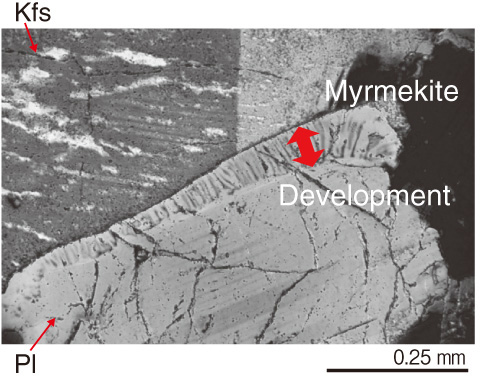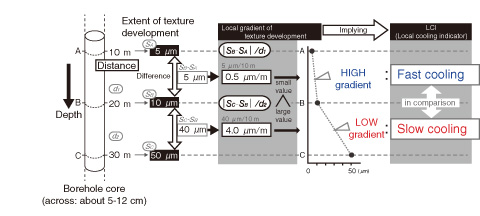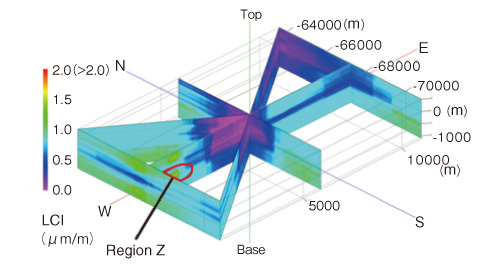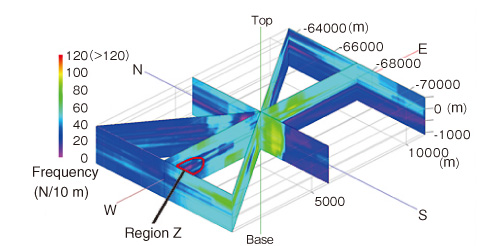
Fig.3-3 Micrometer-scale texture (myrmekite) indicative of cooling process of pluton

Fig.3-4 Local cooling indicator

Fig.3-5 Contoured spatial distribution of LCI in the Toki granitic body

Fig.3-6 Contoured spatial distribution of fracture frequency
Fractures in granitic rock (crystalline rock) can act as groundwater pathways. Therefore, understanding the fracture distribution is important for the safety assessment of the disposal of high-level radioactive waste. The present study proposes that the cooling process in a granitic pluton will provide key insight for understanding the fracture distribution on the basis of thermal stress.
Our earlier study revealed that the extent of micrometer-scale textures (e.g., myrmekite; Fig.3-3) is a powerful parameter for quantifying the cooling process in plutonic rocks. The degree of texture development was measured at two neighboring positions, and the difference was divided by the distance between the two positions (Fig.3-4). The resulting quantity is defined here as the local cooling indicator (LCI). This is a revolutionary procedure for evaluating the thermal stress during cooling.
The spatial distribution of the LCI was constructed on the basis of about 670 textures from 19 boreholes in the Toki granitic body, Central Japan (Fig.3-5). There is a relationship between the distribution patterns of the LCI (Fig.3-5) and the fracture frequency (Fig.3-6); i.e., regions of fast local cooling correspond to regions of high fracture frequency and vice versa (e.g., the central region and region Z). This relationship implies that thermal stress contributes to fracture genesis. The spatial distribution of the fracture frequency in a granitic pluton is constrained mainly by the LCI. This case study employs a petrographical method, i.e., the LCI, and provides a constructive study on evaluating the fracture distribution in granite.
A further study will examine the intrusion and emplacement process of a granitic magma. The heterogeneity of rock facies and chemistry in the granite, which was attributed to intrusion and emplacement of the granitic magma, yields a difference in the petrophysical properties. Fracturing is closely associated with this difference. In this way, we aim to elucidate the fracture formation and development processes with higher resolution.
<Previous: 3 Research and Development on Geological Disposal of High-Level Radioactive Waste | Next: 3-2 >